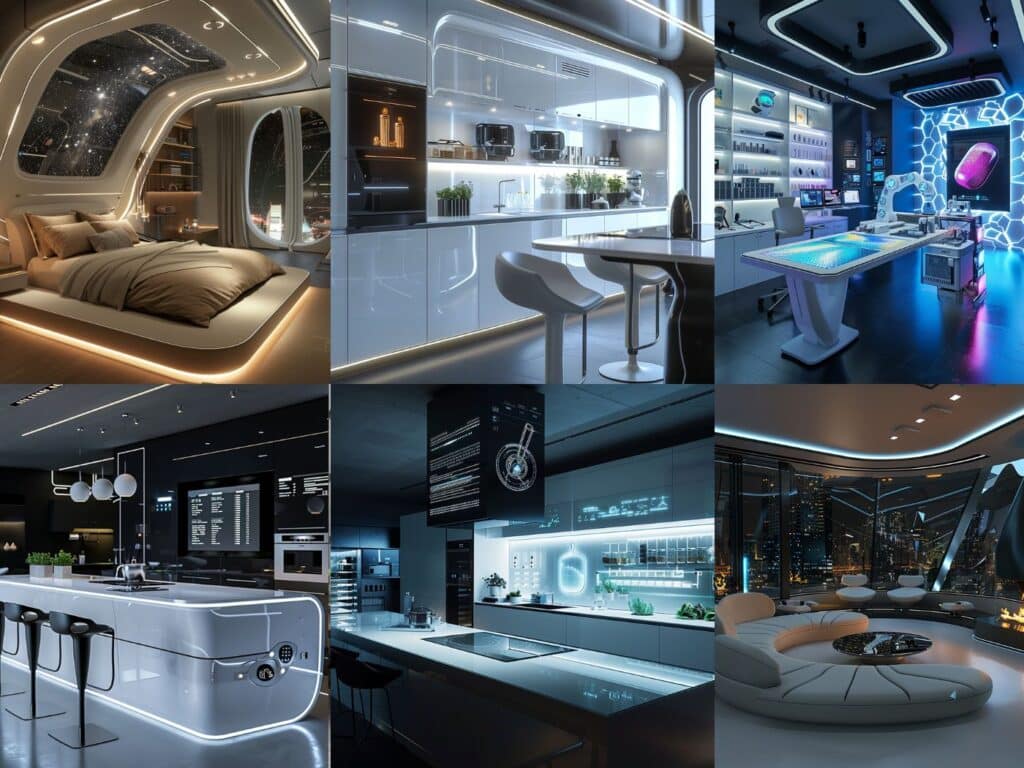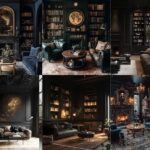Imagine stepping into a home that feels like it’s been plucked straight out of a science fiction movie. Futuristic interior design offers this very experience, blending modern aesthetics with cutting-edge technology to create spaces that are not only visually stunning but also highly functional. This style goes beyond traditional norms, embracing innovation and creativity in every corner.
You’re probably wondering how such an avant-garde approach can fit into your everyday life. The benefits are numerous: from increased energy efficiency to enhanced functionality and a unique atmosphere that’s both inspiring and calming.
Whether you’re looking to revamp your living space or simply curious about the latest trends in interior design, exploring the world of futuristic interiors can open up new possibilities you never imagined.
10 Futuristic Interior Design Ideas And Styles
#1. Futuristic Living Room Interior Design
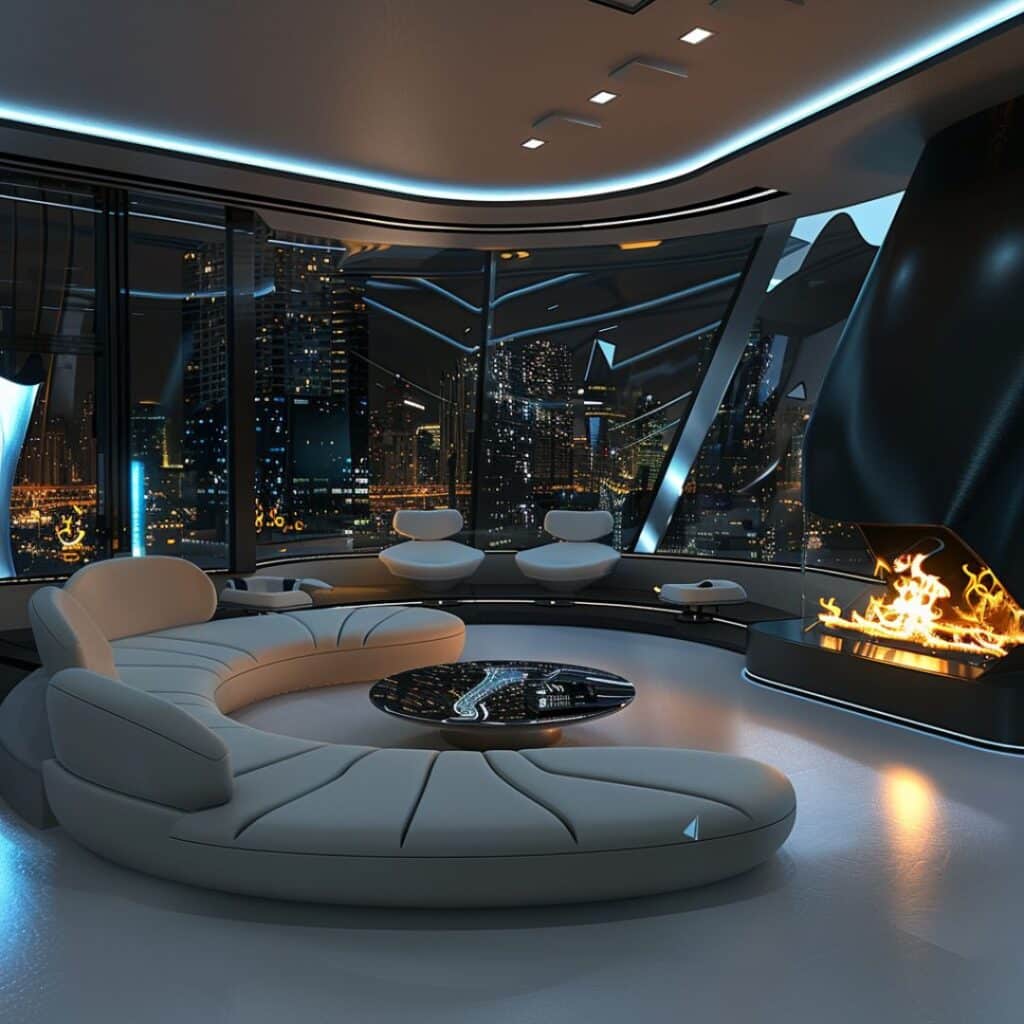
#2. Futuristic Kitchen Interior Idea
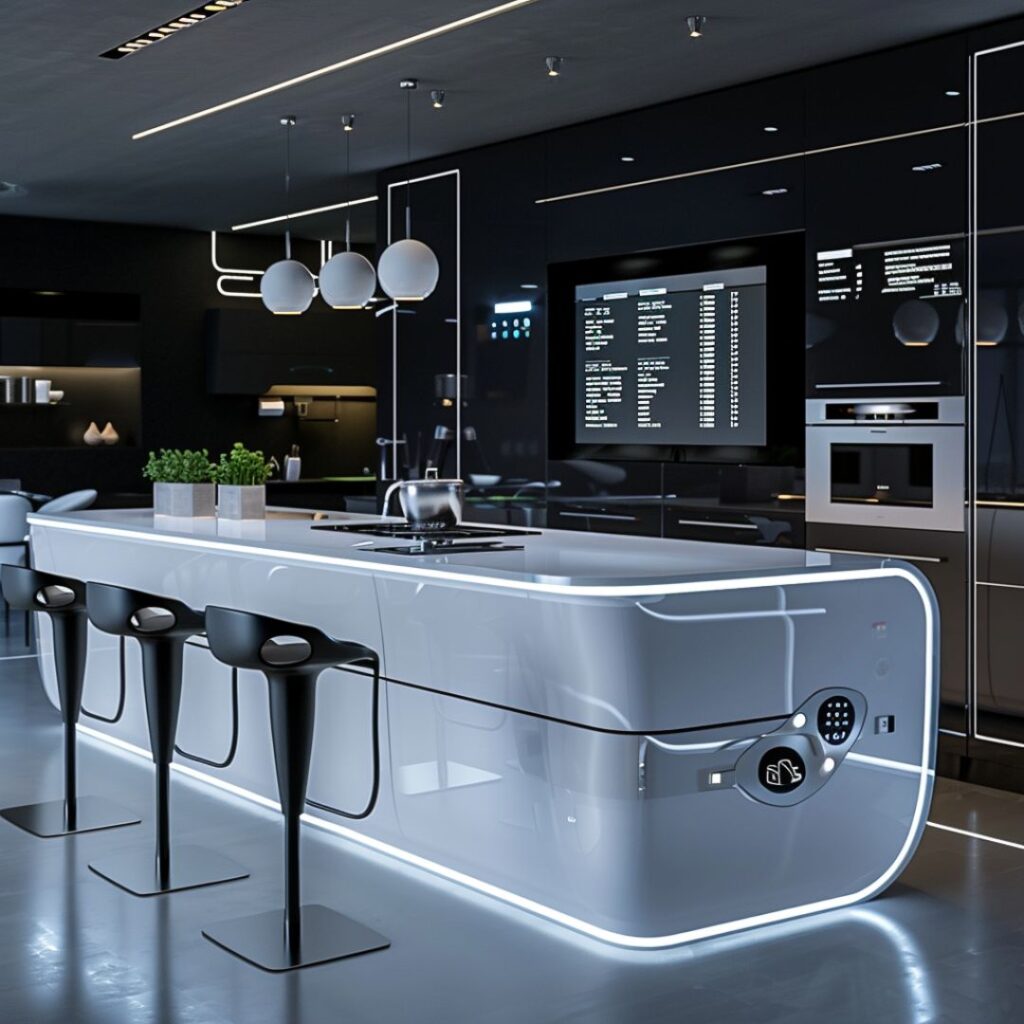
#3. Futuristic Kitchen Interior Design
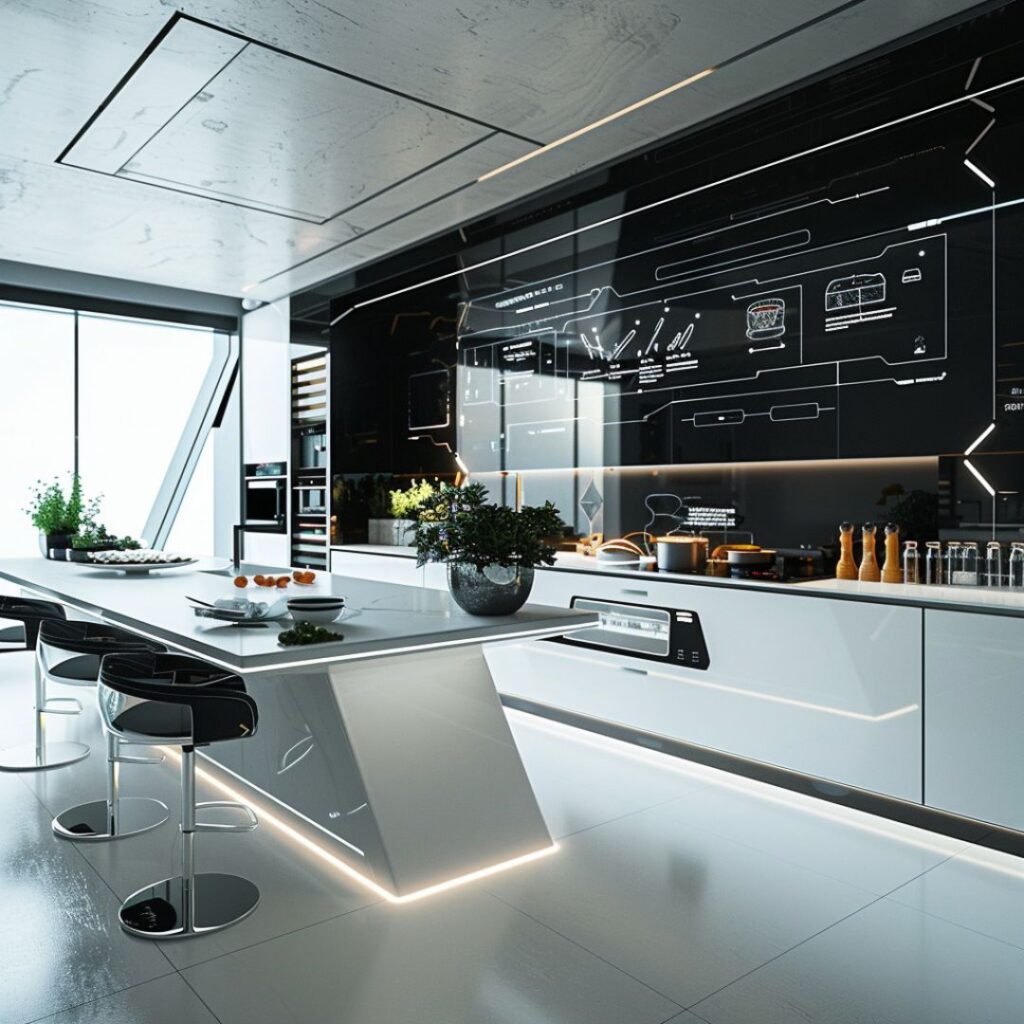
#4. Futuristic Kitchen Idea
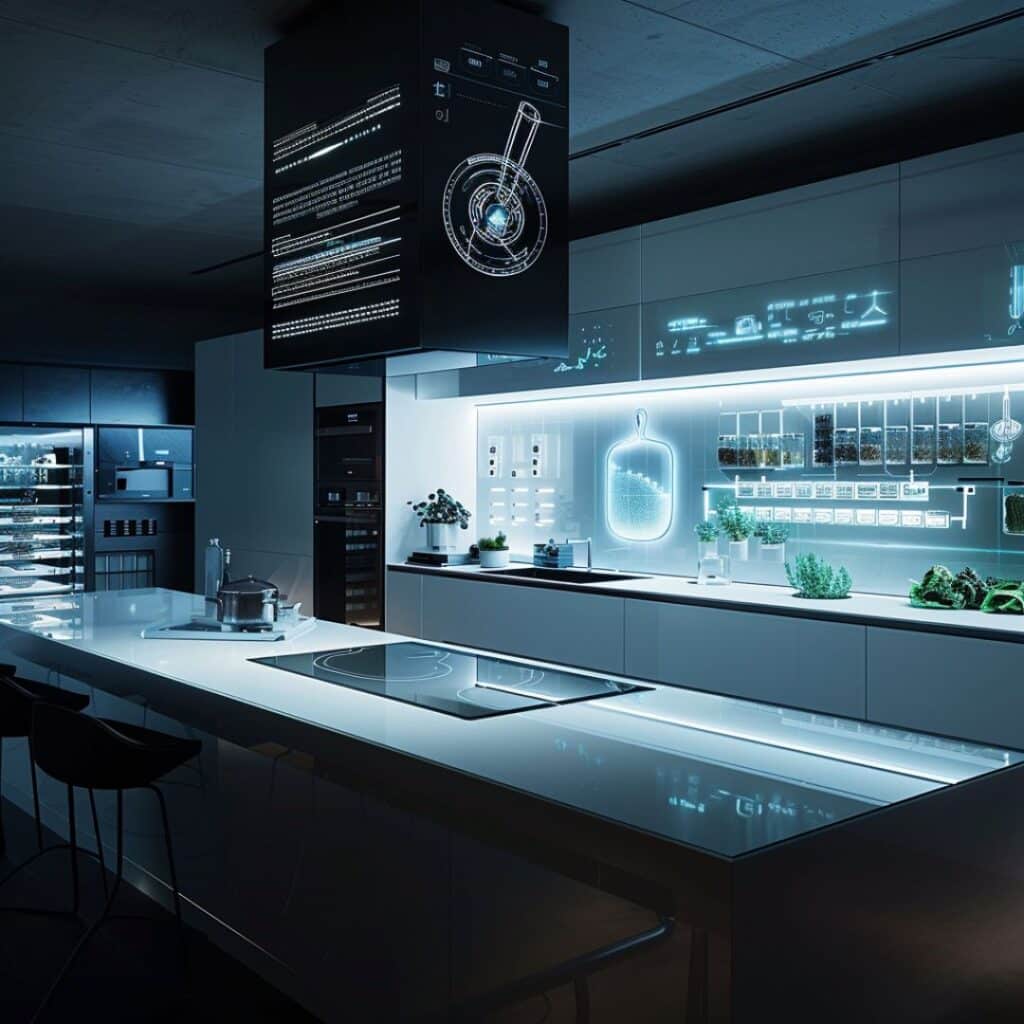
#5. Futuristic Kitchen Design
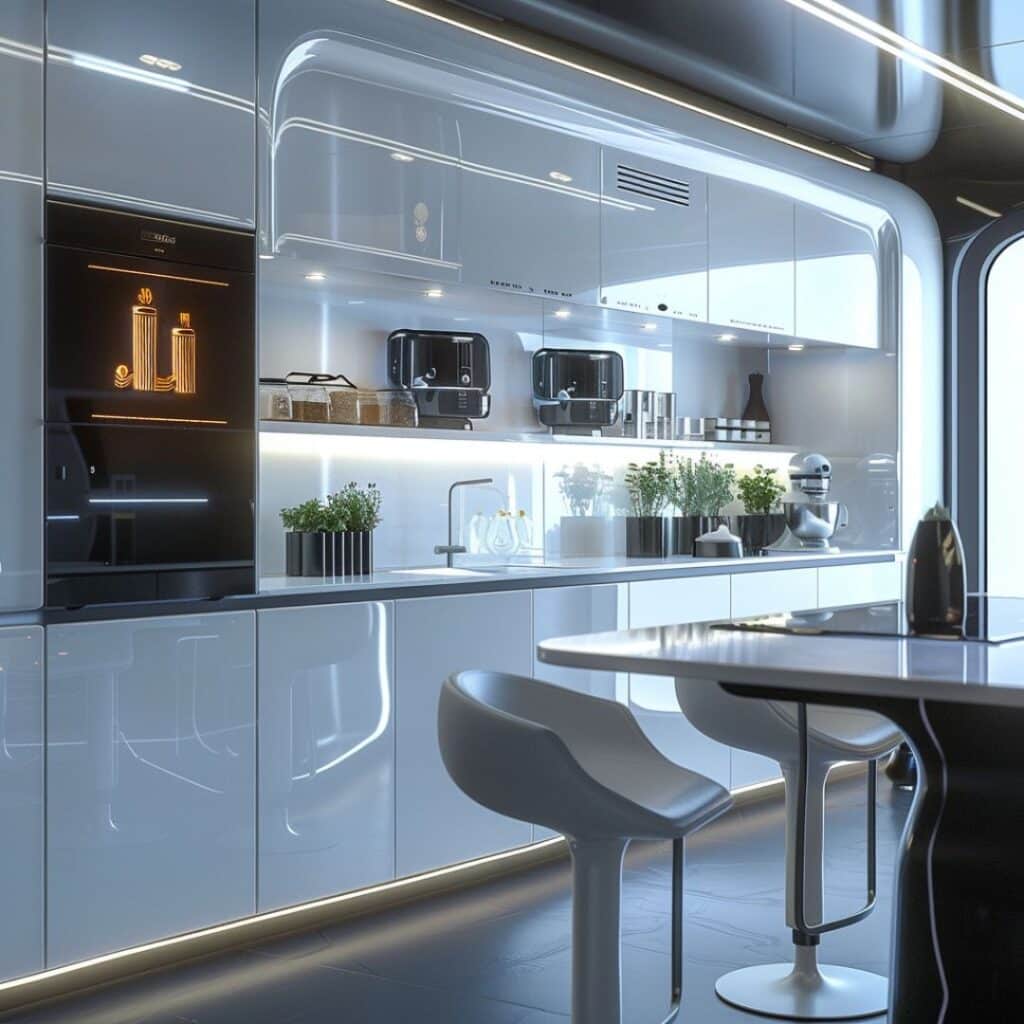
#6. Futuristic Craft Room Interior Design
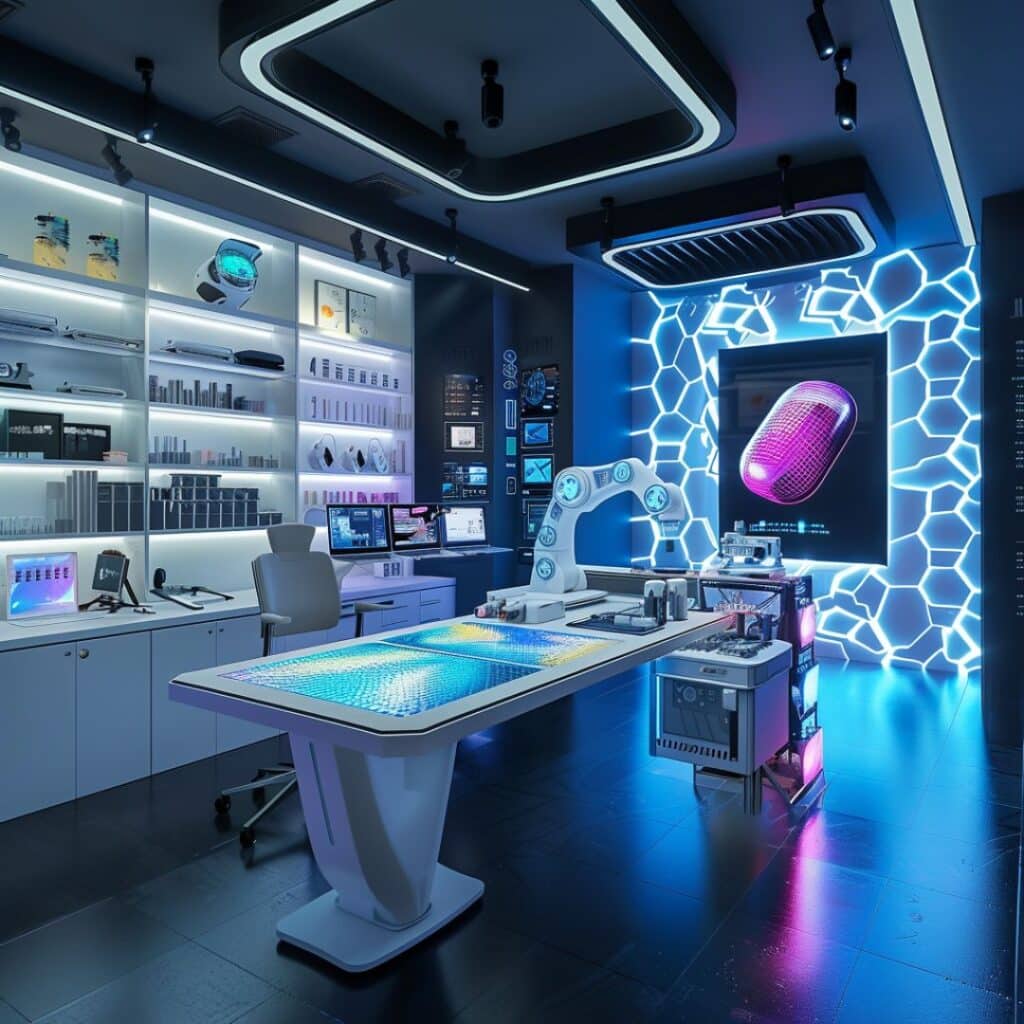
#7. Futuristic Craft Room Interior Idea

#8. Futuristic Bedroom Interior Idea
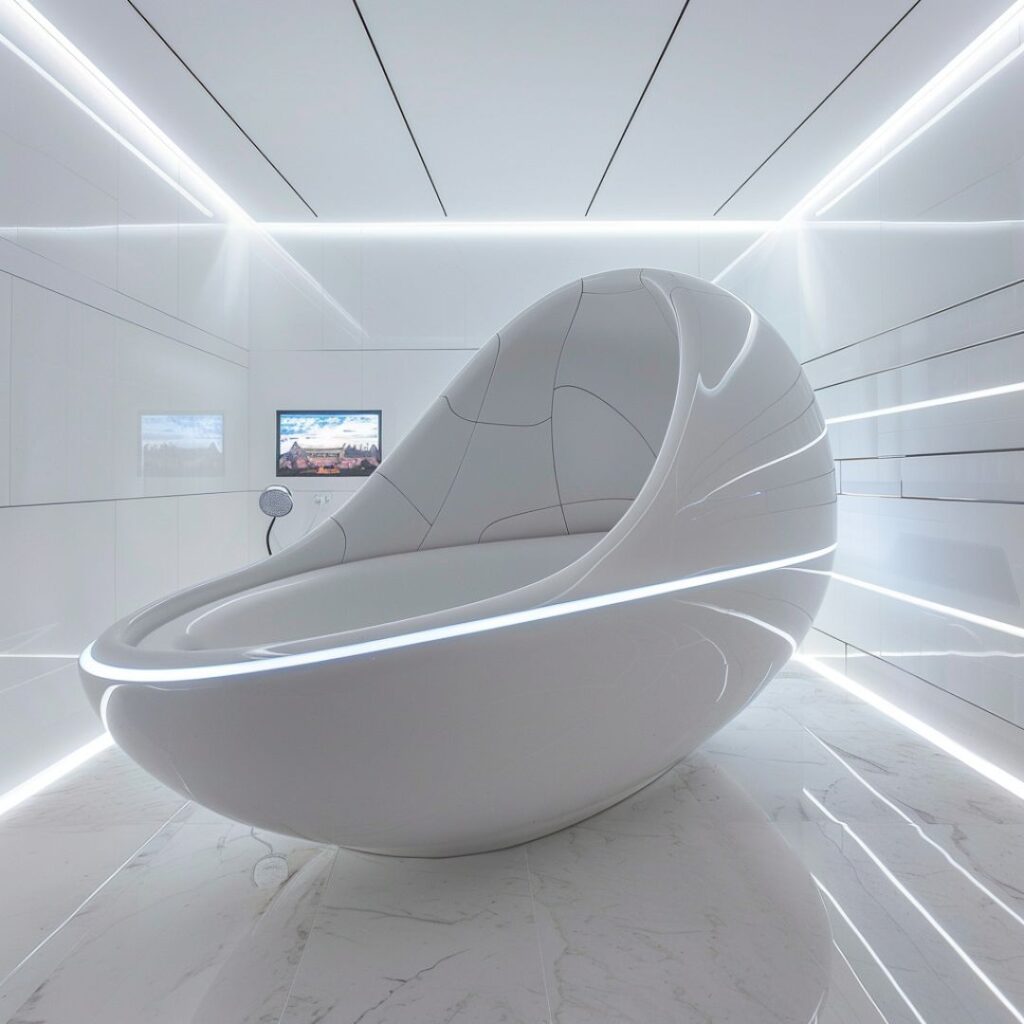
#9. Futuristic Bedroom Idea

#10. Futuristic Bedroom Design
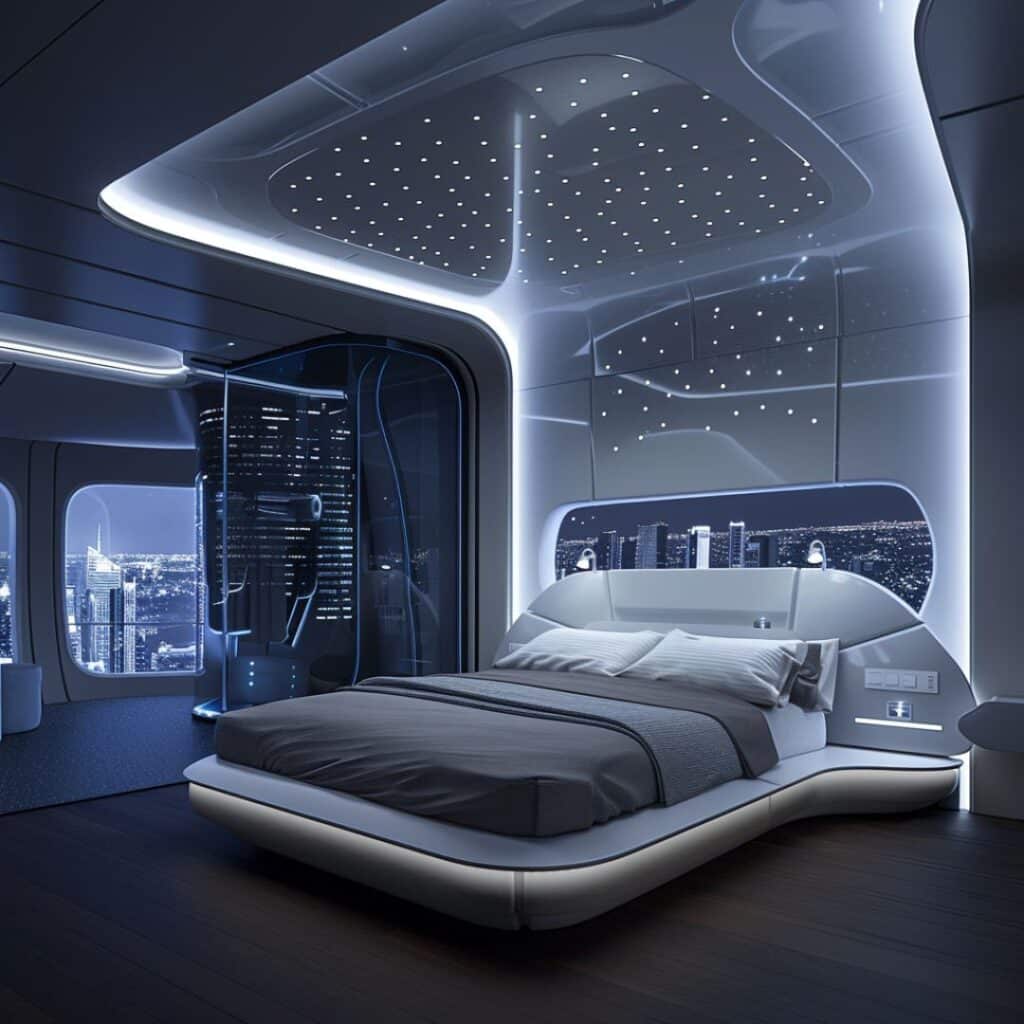
Key Elements of Futuristic Interior Design
Futuristic interior design combines sleek aesthetics with advanced technology. This style offers a modern, functional, and innovative space.
Innovative Use of Shapes and Materials
Futuristic furniture features avant-garde designs using materials like metal, glass, leather, and plastics. Reflective and transparent materials create a sense of spaciousness. 3D printed furniture introduces intricate shapes that stand out.
Emphasis on Minimalism and Functionality
This design prioritizes minimalism with simple shapes and clean lines. Every element serves a purpose to avoid clutter. Multifunctional furniture maximizes utility in smaller spaces.
Integration of Advanced Technology
Smart lighting systems adjust based on your preferences or time of day. Automation controls temperature, security, and entertainment for convenience. Voice-command technology enhances interactivity within the space.
Combining these key elements results in an environment that’s visually appealing and highly functional.
Designing Futuristic Spaces by Room
Futuristic interior design blends sleek simplicity with advanced technology. Each room can be transformed to reflect a modern and forward-thinking aesthetic.
Transforming the Living Room
Use metallic finishes on furniture like a chrome coffee table or silver pillows. Install unique lighting fixtures such as hanging LEDs or modern chandeliers. Add futuristic art pieces, including sculptures made from acrylic or metal, to complete the look.
You can also incorporate Mid-Century Modern interior design elements for a touch of timeless style.
Redefining the Bedroom
Choose a minimalist bed frame with clean lines for a sleek appearance. Opt for high-tech bedding materials, such as smart sheets or metallic duvets, that offer both comfort and innovation.
Futuristic Kitchen Concepts
Incorporate smart appliances that enhance functionality and efficiency. Use materials like stainless steel and glass for countertops and cabinetry to create a polished look. Integrate voice-activated systems for lighting and temperature control to streamline daily tasks.
Bathroom Innovations
Install touchless faucets and smart mirrors that can display information while you get ready. Use LED lighting around mirrors or in shower areas for an ultra-modern vibe. Select minimalistic fixtures with clean lines to maintain an uncluttered space.
By focusing on these elements, you can transform each room into a futuristic haven that combines style with cutting-edge technology.
Incorporating Futuristic Features in Your Home
Integrate modern aesthetics and tech for a futuristic home. Focus on automation, sustainability, and innovative lighting.
Smart Home Solutions
Incorporate smart home technology to streamline daily tasks. Use voice-activated assistants like Amazon Alexa or Google Home to control lighting, temperature, and appliances. Centralize all systems for seamless operation across your entire space.
Sustainability and Eco-Friendly Designs
Prioritize eco-friendly materials in your design choices. Opt for sustainable options like bamboo flooring and recycled metal fixtures. Energy-efficient appliances can reduce your carbon footprint while enhancing functionality.
Lighting and Color Dynamics
Utilize advanced lighting solutions to transform spaces. Install LED lights that can change colors to suit different moods. Combine these with sleek pendant lights or modern chandeliers to create a stunning visual effect.
By focusing on these elements, you can achieve a sophisticated, futuristic look throughout your home without compromising on comfort or efficiency.
Trends and Inspirations in Futuristic Design
The futuristic interior design draws from science fiction, technology, and forward-thinking concepts. It creates spaces that feel both modern and ahead of their time.
Influences from Science Fiction and Technology
Science fiction has always inspired futuristic design. It brings imaginative visuals into reality by incorporating sleek surfaces, advanced materials, and smart home systems.
Popular science fiction films often showcase homes with automated features like voice-activated controls and intelligent lighting. These elements translate into real-life designs that prioritize convenience and efficiency, aligning well with modern interior design principles.
Technology also plays a significant role. Innovations such as augmented reality (AR) allow designers to visualize changes before making them permanent, reducing trial-and-error efforts. Virtual reality (VR) offers immersive experiences where clients can explore new layouts in a simulated environment. This tech-driven approach not only saves time but enhances precision in planning.
The Role of Virtual and Augmented Reality in Design
Virtual reality (VR) transforms the way you experience space planning. By wearing VR headsets, you can walk through virtual models of your future home or office, experiencing every detail from various angles without physical constraints. This method provides a comprehensive understanding of spatial relationships and design impacts.
Augmented reality (AR), conversely, overlays digital information onto your existing space using devices like smartphones or tablets. With AR apps, you can see how furniture fits into rooms or how colors change the ambiance instantly. Both VR and AR bridge gaps between imagination and execution by offering tangible previews before finalizing decisions.
These technologies streamline communication between designers and clients while improving satisfaction levels through interactive participation in design processes.

